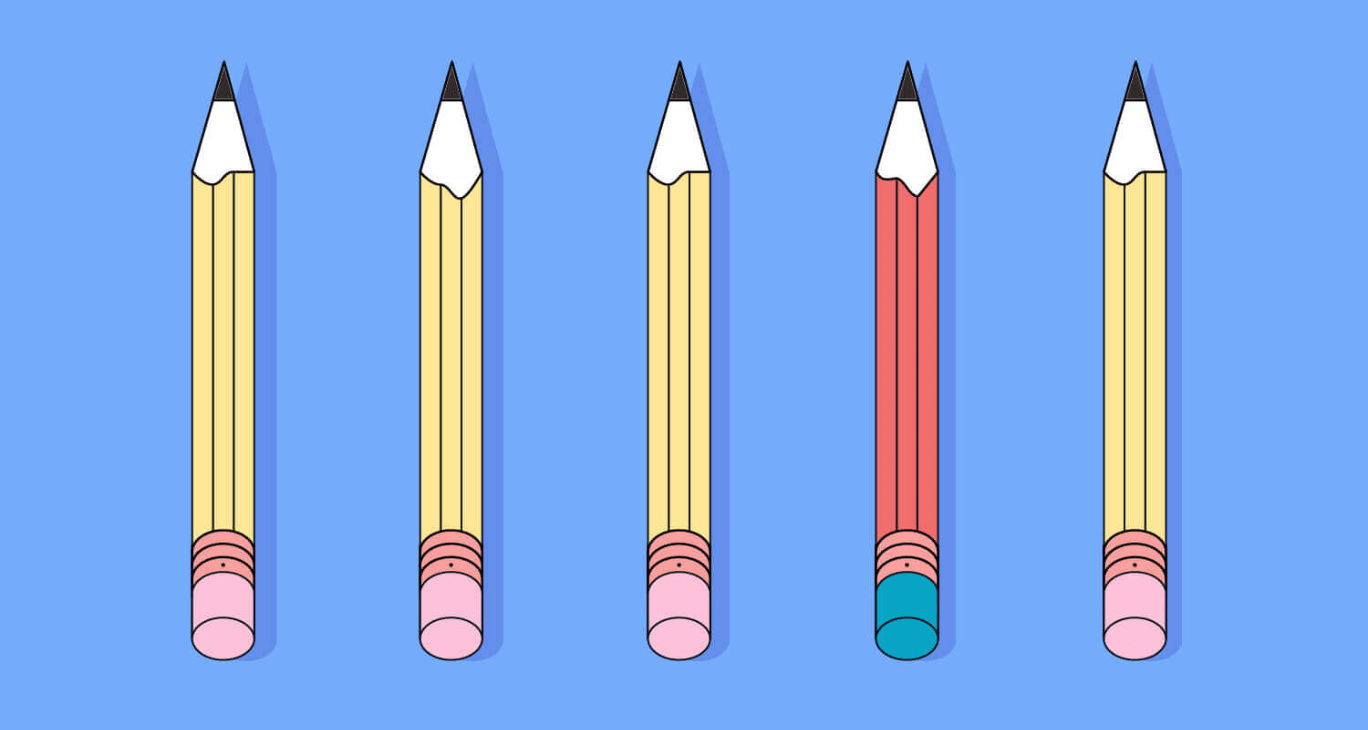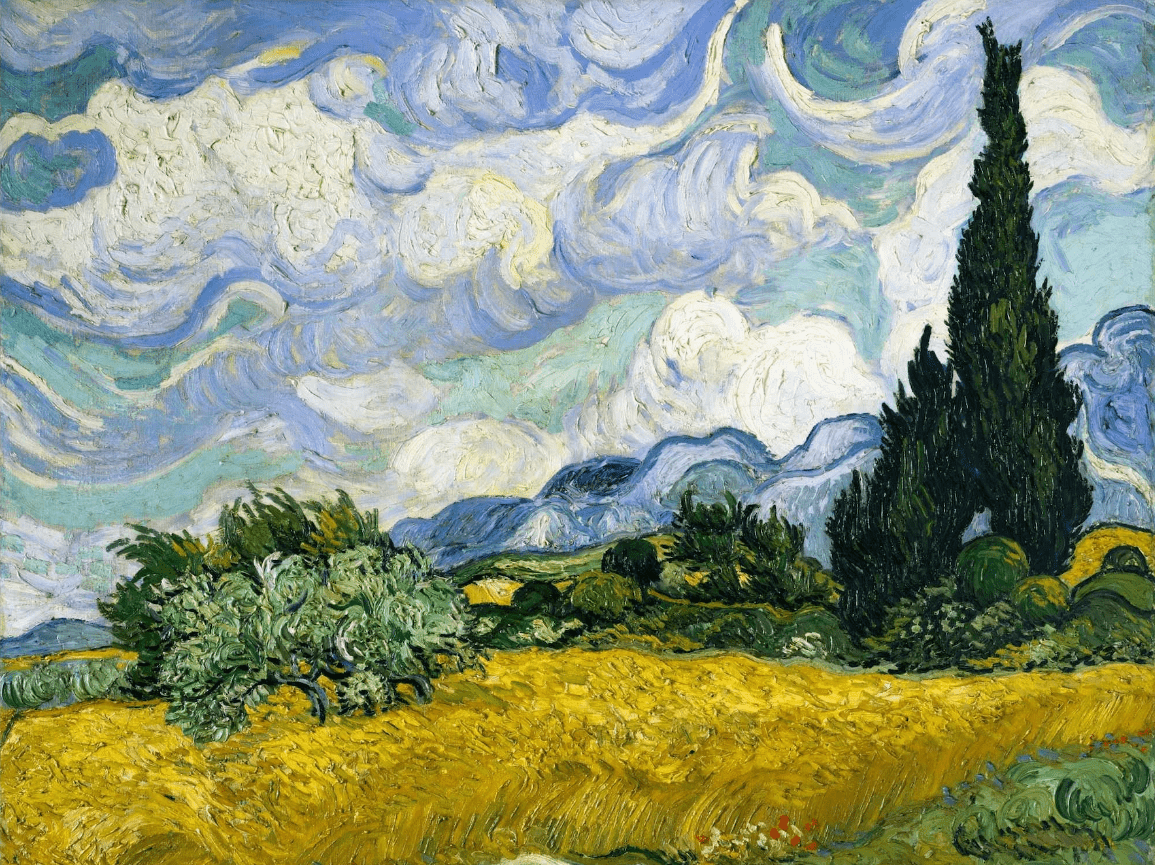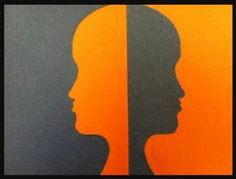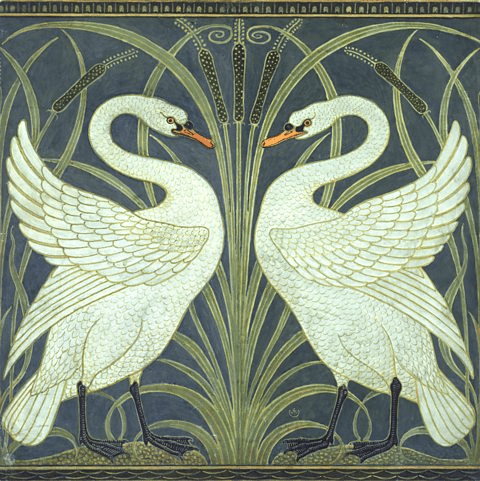lines
The repetition of shapes, lines, or images in an artwork.
rhythm
vertical, horizontal, diagonal, zig-zag, bumpy/wavy/curved, dotted, dashed, thin & thick
What is emphasized in this picture?

the red pencil
What are the 3 Primary Colors?
red, blue & yellow
The lightness or darkness of a work of art - it's what makes forms appear 3D!
value
movement
Name 3 geometric shapes.
square, circle, triangle, octagon, pentagon, hexagon, diamond, etc.
What is moving in this artwork?

What 3 colors do you make by mixing 2 primary colors together? What do you call this color family?
orange, purple & green; Secondary Colors
Shapes that are 3D, or objects that have length, width & height.
forms
variety
What are the two types of shapes?
geometric & organic
What Principle of Design is depicted in this artwork?

contrast
Pure color is called _____.
Light reflected by objects and seen by the human eye.
color
contrast
What are the two types of texture?
2D & 3D
Explain how this artwork is balanced.
If the artwork were to be split in half down the middle, the same amount of elements would be on the left side as there are on the right side.
A ____ is any pure color mixed with white, a _____ is any pure color mixed with black.
tint; shade
The building blocks that create all art - they are quite literally what art is made out of!
The Elements of Design
These are different ways someone can arrange the Elements of Design to create interesting artwork.
What is a "heavy" color?
a dark color
The _____ is a color spectrum that shows how different colors are related to one another.
color wheel
The perceived surface quality of a work of art.
texture
The separate parts of an artwork working together.
unity
Pointillism painting is similar to which type of shading technique?
stipping
What two things can change the balance of an artwork?
the size of shapes & colors
_____ Colors are any 3 colors next to each other on the color wheel.
Analogous
The representation of an object or its external boundary, outline, surface.
shape
A drawing method that can show how shapes appear to be bigger when they are closer to us and smaller when they are further away.
perspective
Give an example of contrasting colors.
red & green; purple & yellow; orange & blue; black & white; light colors & dark colors
Name all 3 Complementary Color pairs.
_____ is the main subject of an artwork. _____ refers to the background of an artwork.
Positive Space; Negative Space
The distribution of elements in an artwork.
balance
hatching, cross-hatching, blending, scumbling & stippling
Give a non-color example of contrast in an artwork.
any specific Element of Design & it's opposite
_____ Colors are made by mixing 1 Primary Color with 1 Secondary Color. When naming this type of color, the Primary Color always comes first (red-orange, yellow-green, etc.).
Tertiary
The distances or areas around, between & within lines, shapes, or forms in an artwork.
space
proportion
Name all 7 Elements of Design
color, line, shape, form, value, space & texture
Name all 8 Principles of Design
proportion, emphasis, movement, rhythm, variety, balance, contrast & unity
Name all 6 warm colors.
red-violet, red, red-orange, orange, yellow-orange & yellow